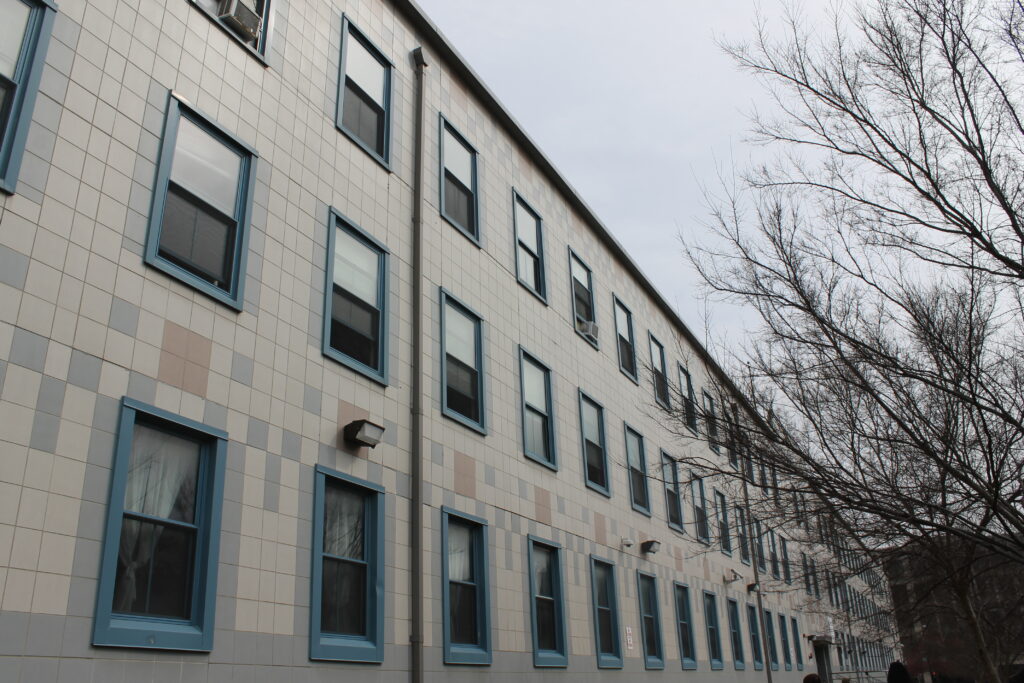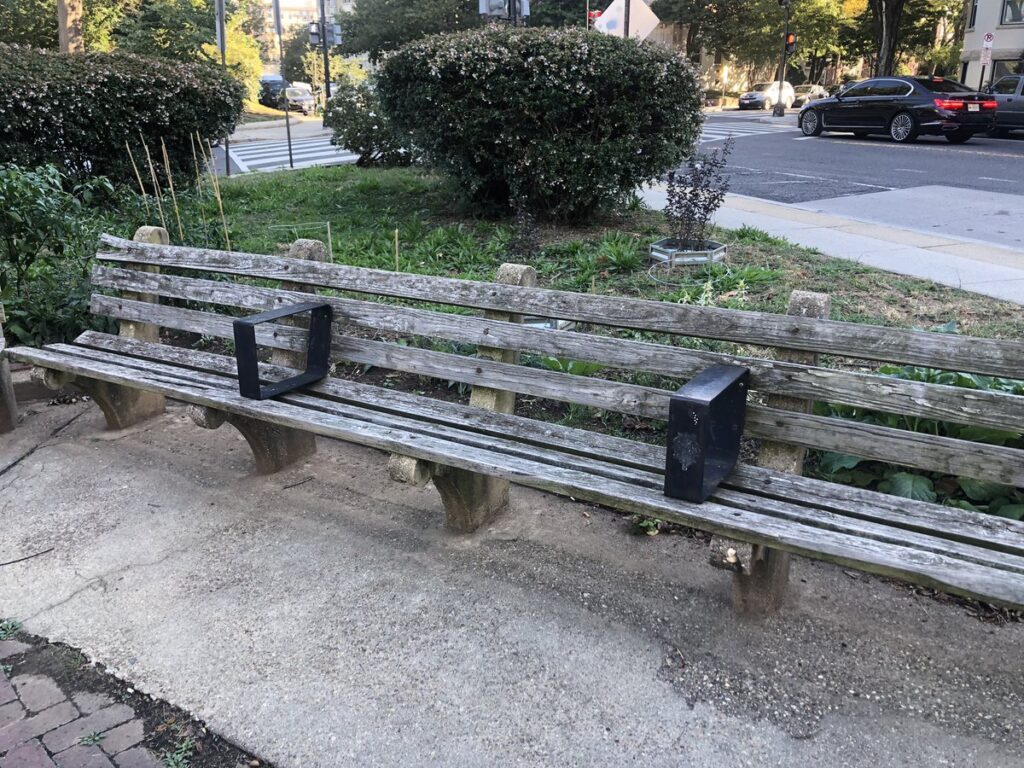When the temperature dips below 32 degrees, everyone in D.C. has a right to shelter under local law. This winter, people experiencing homelessness can go to one of the city’s low-barrier or overflow shelters.
The winter’s extreme cold poses a particular risk to people who sleep outside or spend most of the day there. On below-freezing nights, D.C. aims to provide an indoor space for everyone experiencing homelessness, operating overflow shelters for people in search of a place to stay warm. These temporary shelters are especially important this year, since D.C.’s low-barrier shelters, which operate year-round, were full long before the start of winter.
The Interagency Council on Homelessness (ICH) voted Oct. 11 to approve this year’s winter plan, which guides hypothermia prevention. While much of the plan remains the same year-to-year, this version is the first in several years to exclude seasonal shelters, which are open for the entire hypothermia season. Other shelter locations may be different from previous years and are subject to change throughout the season. The fundamentals of the plan haven’t changed, though: Anyone seeking indoor shelter for themselves or another person can call the D.C. Shelter Hotline at 202-399-7093 for information on and transportation to shelter.
Forecasts for the upcoming winter vary, but some predict it will be even snowier than in past years. Temperatures typically fall below 32 degrees on more than 100 days of D.C.’s hypothermia season, which lasts from Nov. 1 through April 15. Over the last seven years, 13 people experiencing homelessness are known to have died of hypothermia in D.C., according to the Office of the Chief Medical Examiner. Given the large number of people who die unhoused each year — 69 in 2021 — this number may be an undercount.
Be on the lookout for symptoms of hypothermia — shivering, slurred speech, weak pulse, low energy, and confusion — and frostbite — redness and pain, white, gray, or yellow skin, and numbness. If calling on behalf of someone else, many mutual aid organizations suggest trying to speak to the person before doing so. Many people who are homeless choose to stay outside because of poor shelter conditions; in some circumstances, those who refuse to go with outreach workers during a hypothermia warning could be involuntarily hospitalized.
The Winter Plan
Last winter, 1,393 men and 526 women in D.C. sought shelter during the busiest night of hypothermia season (shelter beds are divided by a gender binary, though some homeless people identify outside of it). Since the city’s shelter system provides 1,994 year-round beds and 70 overflow beds, the ICH initially planned not to open many additional shelters this year, ICH Director Theresa Silla explained in meetings this summer.
However, the demand for shelter has turned out to be much higher in recent months. Migrants bused into the District are turning to low-barrier shelters. And shelters are still operating at a reduced capacity to mitigate the spread of COVID-19. So throughout October, D.C. identified several additional overflow shelters that will operate this winter. The below lists of shelters are accurate as of Nov. 14 and may be outdated later in the season. Residents should call the shelter hotline for an updated list.
During hypothermia season, the city will announce two kinds of weather alerts: a hypothermia alert when the temperature is predicted to fall below 32 degrees, or below 40 degrees with rain or snow; or a cold weather emergency alert when the temperature falls below 15 degrees, or below 20 degrees with snow or ice. Residents can call the shelter hotline to find out if the city is under an alert, or sign up for alerts at hsema.dc.gov/page/alertdc.
Three types of shelter are available for individuals: low-barrier shelters, overflow shelters, and warming sites. Low-barrier shelters, shown in the first chart, are open throughout the whole season. Overflow sites, in the second chart, are open on alert nights but may operate on other nights as well. Warming sites are only open on cold weather emergency alert nights. Those seeking shelter should check the alert for that day before going to either an overflow shelter or a warming site.
Despite the expanded services, there are still gaps in D.C.’s hypothermia response. Overflow and warming sites are not open during the day, when temperatures can still drop below 32 degrees. While D.C. has three day centers — Adams Place, Downtown Day, and Zoe’s — they have limited hours, especially on Sundays and holidays. Many public facilities people may rely on, such as libraries and recreation centers, also have restricted hours. Last year, 28 alerts on Sundays and holidays left people without many options.
Hypothermia season services
The city’s low-barrier shelters are operating 24/7 and serving at least two meals daily, except for Blair and St. Josephine, which are open from 7 p.m. to 7 a.m. every night. The other low-barrier shelters may cease 24/7 operations during the winter with 60 days’ notice. Intake generally starts around 4 p.m.
All low-barrier shelters are currently at or near capacity. According to the winter plan, people who go to a low-barrier shelter will be encouraged to stay there until spring.

When low-barrier shelters are full, people seeking shelter will be directed to an overflow site. Once an overflow shelter opens for one night, it may operate as well non-alert nights, depending on the availability of sufficient resources. Overflow shelters are open from 8 p.m. to 7 a.m. when operating, and provide dinner and a grab-and-go breakfast.
Two facilities attached to low-barrier shelters will serve as overflow sites throughout the winter; these are 801 East for men and Adams Place Day Center for women. Both sites are now open and will stay open for the whole season. A third overflow shelter at Salvation Army is also open, as is an overflow space at the Community for Creative Non-Violence shelter, and the city expects to stand up shelters at the Church of the Epiphany, Sherwood Recreation Center and King Greenleaf Recreation Center in mid-November. All three sites should be available on non-alert nights, according to the ICH. But it’s still possible the overflow shelters will change throughout the season, so it’s best to call the shelter hotline to find out where to go. The below chart only lists sites that are currently operational.

On especially cold nights, the city opens overnight warming sites in public buildings, including libraries, recreation centers, and senior centers. These sites are generally open from 7 p.m. to 7 a.m. and do not stay open during the rest of the winter. These sites do not serve meals. The city is working on an updated list of warming sites, which will be found at snow.dc.gov/service/warming-centers-and-facilities.
Families seeking shelter during hypothermia season can either call the Virginia Williams Family Resource Center at 202-526-0017 or visit Monday-Thursday between 8:30 a.m. and 4 p.m. and Friday between 8:30 a.m. and noon. Staff will refer families to shelters.
Shelters are also available for ages 24 and younger. Unaccompanied minors can call the Sasha Bruce Youthwork Hotline at 202-547-7777 for transportation to a shelter. Youth between 18 and 24 can call the shelter hotline to ask about placement in a youth shelter. If there’s a shortage of beds, young people over 18 may seek shelter in the adult system, including at overflow sites.
In addition to on-demand transportation, the city provides scheduled transit service between shelters and service centers. A complete schedule can be found at ich.dc.gov/page/winter-plan, on Page 23 of the winter plan.
The first edition of Street Sense, published Nov. 15, 2003, included an article on the District’s annual winter plan. At the time, about 17,000 people were experiencing homelessness in D.C. The winter plan provided for 1,100 emergency shelter beds. The above article was inspired by the 2003 version.
This article was co-published with The DC Line.
Annemarie Cuccia covers D.C. government and public affairs through a partnership between Street Sense Media and The DC Line. This joint position was made possible by The Nash Foundation and individual contributors.








